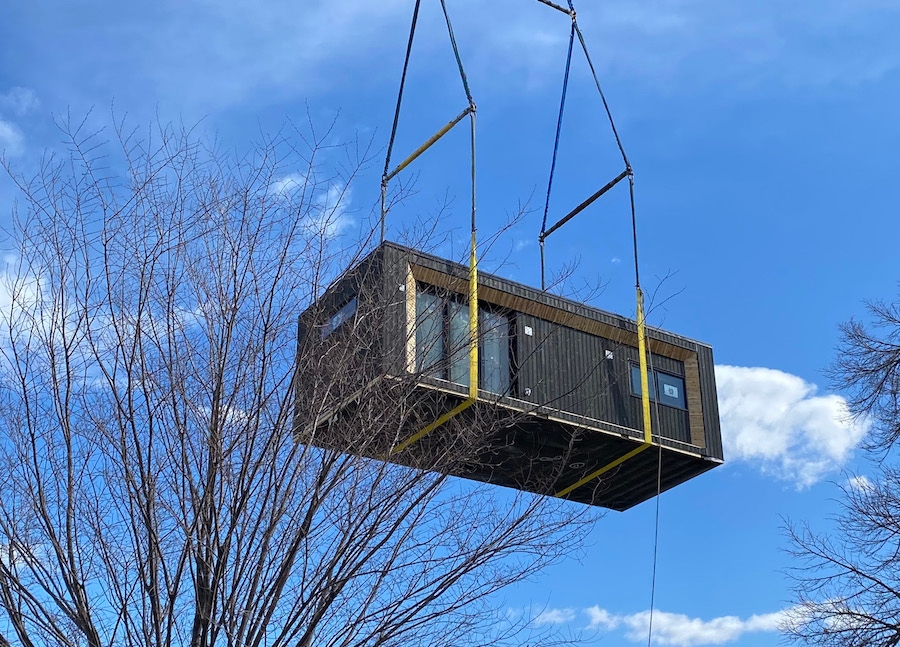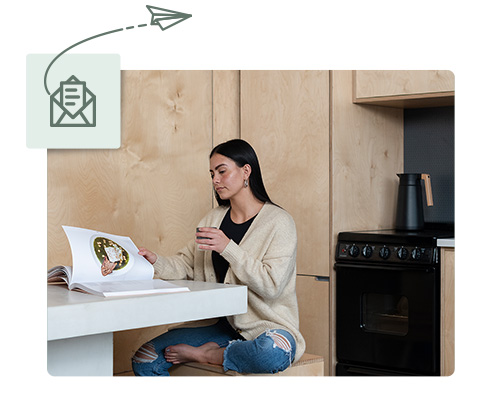Modular buildings are high-end prefab buildings that have differences in their design and construction processes, which set them apart from traditional site-built buildings and panel wall prefab structures.
Prefab is an overarching definition that includes modular homes, meaning that pieces of the building are constructed off-site then joined together at the building site. Modular is technically a type of prefab, but there are many prefab building types that are not considered modular.
The main difference between modular and other prefabs is that modular buildings are constructed off-site and then delivered in one entire, complete piece to your property. Like site-built buildings and unlike most prefab options, modular buildings are also installed on a permanent foundation. Modular homes are differentiated in that they are more sustainable, reliable, high-quality, and consistent than other prefabs. Ultimately, they provide a fast, single-day installation process and a hassle-free experience for homeowners wanting to add more market value and living space to a property.

Benefits of Adding a Modular Living Space to Your Property
Modular homes provide a streamlined modern aesthetic that looks great on any property. Unlike other prefab options out there, modular homes provide the following qualities, making them an excellent investment.
Sustainability
Known to be an eco-friendly choice, modular homes are built efficiently with the entire construction process taking place in one location. This means building strategies are operational and repeated, ensuring that all materials are used with purpose and less waste is produced. Any small amount of waste that is produced is far more likely to be recycled in this sort of setting as well. The precision that goes into designing and building a modular home makes for more efficient use of energy resources like electric, heating and air conditioning in the long-term as well.
Reliability
Modular homes are placed on a solid foundation, just like site-built homes. This type of foundation increases dependability and safety, qualities that not all prefabs provide. Additionally, modular and site-built structures are held to the same International Residential Code, which ensures reliability and safety. The foundation and adherence to code also mean that a modular home can often be financed through traditional home financing options.
High-Quality
Modular homes have to be durable from the get go?strong enough to transport in one piece and arrive ready for installation and use. For this reason, modular buildings are designed from the beginning to be built-to-last and withstand all sorts of movement and weather.
Consistency
There is less room for human error or weather issues with a modular home. Because modular homes are built in a factory setting, the entire process is done with incredible oversight, planning, and precision. This leaves less room for damage, errors, or delays throughout the process. Weather isn’t an issue in terms of materials getting damaged or delaying the building process as it is all done inside.
Fast and Hassle-Free
On your end, adding a modular home to your property is a fast and hassle-free process. A foundation can be poured in advance and the modular can be delivered and installed in one day. There is the added benefit of not having construction crews on your property for weeks or months on end as well.
Choosing a modular home is a fast and reliable way to add extra space and market value to your property. Whether you utilize the space to provide room for overnight guests, as a designated work area, or as a relaxing retreat each day away from the main house, modular is a great choice.
Tags:
ADU Education, Property Investment, Why Modular, Modular Dwellings, Modular ADUs, Backyard Home, Modular ConstructionMarch 24, 2021
